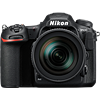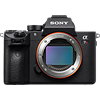Main
Model
Price
Advantages
launch
Announced
Body type
Camera subcategory
Sensor
Effective pixels
Max resolution
Sensor size
Sensor type
Processor
Image ratio w:h
Other resolutions
Sensor photo detectors
Image
ISO
Boosted ISO (minimum)
Boosted ISO (maximum)
White balance presets
Custom white balance
Image stabilization
Uncompressed format
JPEG quality levels
Image stabilization notes
CIPA image stabilization rating
Photography features
Minimum shutter speed
Maximum shutter speed
Aperture priority
Shutter priority
Manual exposure mode
Subject / scene modes
Built-in flash
External flash
Flash modes
Continuous drive
Self-timer
Metering modes
Exposure compensation
AE Bracketing
WB Bracketing
Screen / viewfinder
Articulated LCD
Screen size
Screen dots
Touch screen
Screen type
Live view
Viewfinder type
Viewfinder coverage
Viewfinder magnification
Viewfinder resolution
Videography features
Resolutions
File Format
Microphone
Speaker
Optics & Focus
Autofocus
Digital zoom
Manual focus
Number of focus points
Lens mount
Focal length multiplier
Physical
Weight (inc. batteries)
Dimensions
Environmentally sealed
Battery
Battery details
Battery Life (CIPA)
Storage
Storage types
Storage included
Connectivity
USB
HDMI
Microphone port
Headphone port
Wireless
Wireless notes
Remote control
Other features
Orientation sensor
Timelapse recording
GPS
GPS notes
Samples
Videos
Summary
The Alpha a7R III highest resolution of 7952 x 5304 pixels (42 megapixels) is better in comparison with the Nikon D500 maximum resolution of 5568 x 3712 pixels (21 megapixels). The Alpha a7R III is equipped with larger sensor compared to the Nikon D500: Full frame (35.9 x 24 mm) versus APS-C (23.5 x 15.7 mm). This is very important difference between these models because big sensor lets the photographer to capture pictures of the better quality. The Alpha a7R III provides image stabilization that will help the photographer to capture blur-free pictures when using lenses with long focal lengths. The Alpha a7R III offers more focus points in compare with the Nikon D500: 425 vs 153. More number of focus points means more convenience while attempting to focus on objects which are not centred.
The Nikon D500 screen is better as it has more screen dots 2,359,000 in comparison to 1,440,000 dots of the Alpha a7R III screen. The higher dot count screen is better for reviewing images on your camera.
The Nikon D500 battery life is better in compare to the Alpha a7R III battery life. According to CIPA standards the photographer will be able to produce 1240 photos with the D500 and only 650 with the Alpha a7R III. The Sony Alpha a7R III weighs 657g that is 203g lighter in comparison with the weight of the D500. The D500 can utilize optional accessory GPS devices. Recording GPS data can be convenient if you like to travel, to be able to go into the image metadata and see exactly where a photo was shot.
The Sony Alpha a7R III has 9 advantages and the Nikon D500 only 5 so the Alpha a7R III becomes the best choice. Check the lowest price on Amazon.


